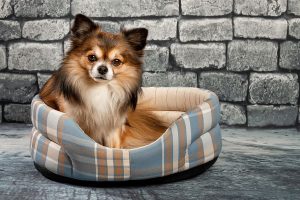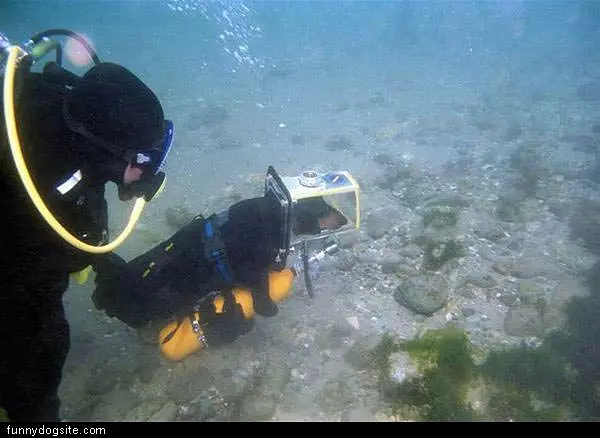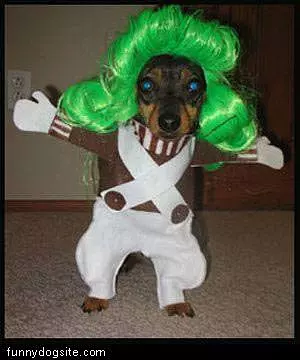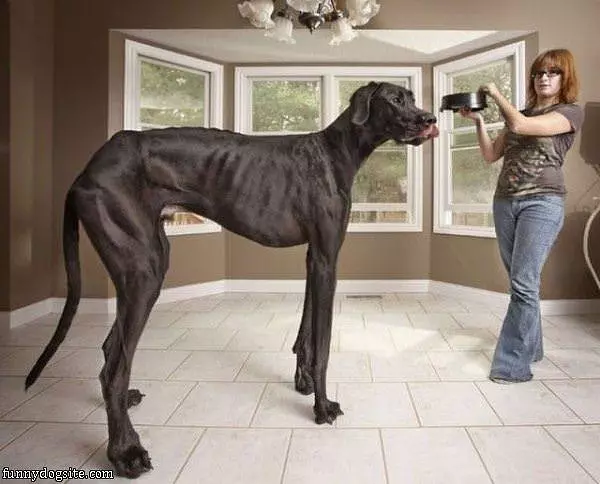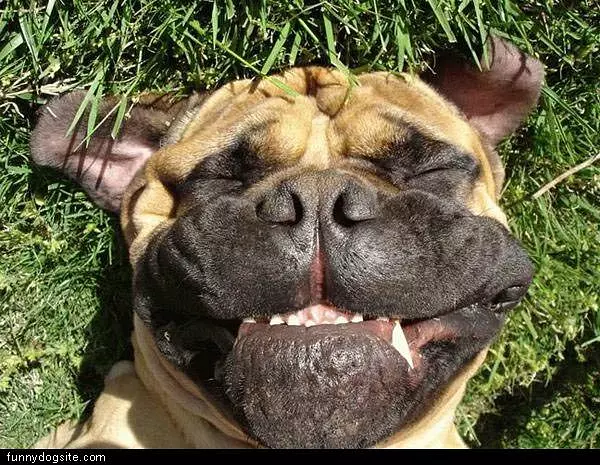Potty training is often the hardest part of being a new pet parent. It can leave you feeling frustrated and wondering if your new pup will ever be toilet-savvy.
What We'll Cover
- The best puppy pads to help train your new dog
- Amazon Basics Dog and Puppy training and potty pads
- Wee-wee pet training and puppy pads
- Simple solution washable training and travel pad
- Wee-wee extra large puppy housebreaking pads
- Hartz home protection odor eliminating dog pads
- Complete guide to buying and using puppy pads in your home
- Get the right puppy pads to speed up training time
If you want to make the process easier on both of you, try using puppy pads.
They can help you contain unexpected messes and teach your dog better bathroom habits. There are plenty of puppy pads on the market, but some are definitely better than others.
Below, we explore the options available and highlight four puppy pads we think are worth bringing home.
The best puppy pads to help train your new dog
This is one area of puppy training where you definitely don't want to cut corners. When shopping for puppy pads, look for a pad that's durable. Puppy pads need to stand up to a puppy’s rough and tumble play without ripping apart. In other words, the pads should be tear-resistant.
Pads should also be ultra-absorbent to cut down on leakage and make clean up easier.
Amazon Basics Dog and Puppy training and potty pads

Includes 150, Regular Size Pads
Super-absorbent core that turns liquid to gel upon contact
Leak-proof with plastic lining to prevent damage to floors
Quick-dry surface with built-in attractant
Pad ...
These Amazon Basics Dog and Puppy pads are generously sized (22-in x 23-in), making them perfect for most dog breeds. They come in boxes of 20, 100, 150, 200, and 300. You can choose either scented or unscented pads, which is great for pet parents with sensitive noses.
The large size means you can stock up and not have to run to the store at inconvenient times.
Amazon Basics Dog and Puppy pads have multiple layers for superior absorbency. This includes a fast-drying quilted top layer that soaks up moisture quickly and wicks it away from the surface. Meanwhile, the bottom layer is leak-proof to prevent spillage through to your floors or carpets.
And, if you’re wondering whether Fido will pay attention, Frisco pads contain an attractant to encourage him to use the pad.
Wee-wee pet training and puppy pads
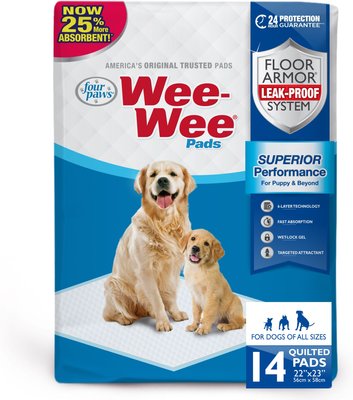
Description
Keep your pup’s mess off of your floor with Four Paws Wee-Wee Absorbent Pads for Dogs. Featuring a 6-layer Floor Armor leak-proof system, these quilted pads are very absorbent and perfe...
If Wee-Wee Pet Training and Puppy Pads (22-in X 23-in) disappointed you in the past, give them another try. Important changes have been made to their design, so they’re now 25% more absorbent.
The pads also have polymer cores that turn urine into gel. So, leakage won’t occur even when you’re cleaning up. The pads come in boxes of 7,10,14, 30, 50, 100, 150, and 200. They’re generously sized, unscented, leak-proof, and contain pheromones to attract your pup to them.
Simple solution washable training and travel pad

Simple Solution Washable Training & Travel Pad can be used in multiple ways and is 10 times more absorbent than standard economy pads
Use for indoor training, furniture and bedding protection, crat...
This is one of the most eco-friendly puppy pad solutions on the market. Each box comes with two extra-large puppy pads (30-in X 32-in. each) that you can wash and reuse. Just throw them in the washer and hang them out to dry. They are effective for up to 300 washes, so these pads are quite cost-effective.
The pads have a moisture-absorbing top layer, so you won't have to worry about spills. They can also be used long after your puppy has been potty trained. Bring them along on vacations or use them as bedding protection when your dog is sick. They also make ideal kennel liners and litter box mats.
Wee-wee extra large puppy housebreaking pads
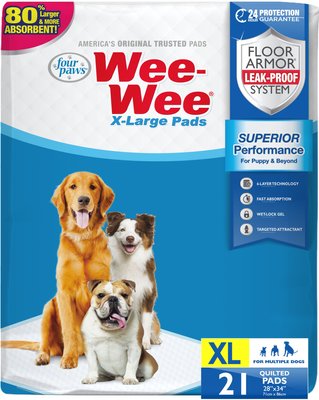
Help get the newest member of your fur family used to his new surroundings with Wee-Wee Extra Large Puppy Housebreaking Pads. Each training pad measures 28 inches x 34 inches and is 25% more absorb...
These extra-large puppy pads are big enough to handle the needs of even the largest puppies. The five absorbent layers draw liquid away from the surface and into the core, where an absorbent polymer soaks up large amounts of liquid.
Wee-Wee pads (28-in x 34-in) come in boxes of 21, 40, and 75.
The top layer will resist tearing under a puppy's sharp claws, which is great if your new furry friend has a feisty nature. Like the above options, Wee-Wee pads also contain a targeted attractant to inspire your pup to do the right thing.
Hartz home protection odor eliminating dog pads

WON’T LEAK: Each pee pad is created with unique FlashDry Technology, which instantly turns liquid into GEL to lock in moisture and prevent messy leaks and unpleasant odors
ODOR ELIMINATING LAVENDER...
These Hartz puppy pads have a gentle lavender scent, so they are a great option for anyone who is particularly sensitive to overpowering smells. They are also ideal for those living in small spaces, where odors travel quickly.
The smaller size (21-in X 21-in) is perfect for small breeds or for use in the car. In all, Hartz pads have superior leak protection and Flash-Dry technology to turn urine into a gel. The pads come in boxes of 30, 70, and 140.
Complete guide to buying and using puppy pads in your home
Accidents happen, especially when it comes to toilet training a puppy. When you have the right puppy pads, it becomes a less frustrating experience for everyone. Learn how to choose the right puppy pads and put them to use in your home.
What are puppy pads?
Puppy pads are large absorbent pads for your puppy to relieve itself on. They have layers of special material that absorbs wetness and odor. Many also have plastic backings that prevent spills and leaks. Once your puppy has used the pad, you can fold it up and throw it away.
To use a pad, unfold it and place it on the floor, plastic side down. Many of these pads have built-in pheromones to attract the puppy to them.
You'll want to use them in areas that are easy to clean or where you want your puppy to use the toilet.
Why you should use puppy pads
- It's tough to know when puppies need to go to the bathroom. Puppies have lots of energy, so they will probably be running and playing up until the very second they squat to relieve themselves.
By then, it's too late for you to scoop them up and take them outside. Puppy pads can help prevent messy accidents. Many also have pheromones that will attract your pup’s attention when it needs to relieve itself.
- They can save your home from expensive damage. When you’re house training a dog, your carpets can incur a lot of damage. By the time you house train your pet, you may need to replace soiled, smelly carpets
That can be a big expense. Using puppy pads can help keep the odor and wetness out of your carpets and furniture.
- Some puppies can't go outside. If your puppy hasn't had all its vaccinations, it may not be safe for it to venture outdoors. Puppy pads give it a safe place to relieve itself inside.
Remember that puppies can hold their urine for one hour for every month of age. So, a two-month old puppy can hold its urine for two hours. The Humane Society advises pet parents to avoid waiting more than two hours between potty sessions.
Puppy pads can be useful at night, too, especially if you live in a rural area. They allow your puppy to toilet-train indoors and avoid larger predators lurking in the shadows.
How to use puppy pads to train your new dog
You'll want to start using the puppy pads as soon as you bring your new dog home. Put the pads in an area you’ve designated. Start taking your puppy to that area every so often, especially after it eats or drinks.
Then, it will start associating the puppy pad as a safe place to go to the bathroom. Also, watch for signs that your new pet needs to go: barking incessantly, scratching furniture, turning around in circles, and exhibiting a general restlessness.
If your puppy pees or poops outside the designated area, firmly say "no" and place it on the puppy pad. Avoid any harsh punishments if it does have an accident, as this can make the puppy reluctant to go to the bathroom in front of you.
Make sure you praise your puppy when it does go to the bathroom in the correct area. A few words and a treat can make the learning process easier.
Where to put puppy pads in your home
- Pick an area that's easy to clean. Avoid carpeting if you can. Laminate or linoleum flooring are good choices.
- Choose a safe area to leave your puppy. You'll want an area where you can safely put your puppy when you need to do household chores or need a break from training.
- Limit the size of the space. Large areas can result in more accidents and separation anxiety. Make a larger area smaller by closing doors or putting up puppy gates to keep your pup contained.
Is it okay to put a puppy pad in your dog's crate?
Avoid putting a puppy pad in your dog's crate. The crate should be a safe space. Just as you wouldn't want a toilet in bed with you, your puppy won’t want a puppy pad in its crate.
Don't worry if your puppy has an accident in its crate. Just clean it up and decrease the length of time it spends in there.
The Humane Society recommends no more than three or four hours at a time in a crate. To crate-train with compassion, avoid using it as a means of punishment. This can instill fear rather than confidence, making potty-training a time of anxiety for your puppy.
How to reward your dog for using the puppy pads
Make using a puppy pad a rewarding experience for your pet. Lavish it with praise and extend lots of affection. This signals to your furry friend that you’re happy with its “accomplishments.”
If your puppy is motivated by goodies, keep some treats in your pocket and hand out one when it successfully eliminates in the right area.
As long as you consistently send a message to Fido that you want it to go to the bathroom in a specific area, it’ll quickly learn.
How long does it take to train your dog using puppy pads?
Every puppy is different. Some only need to use a puppy pad a few times before they understand what you want from them. Others may take longer.
Remember that consistency is key:
- Give your pup a reward every time it goes in the right area
- When your pup makes a mistake, firmly say “no” and redirect it to the right area. Never rub its nose in its feces or urine. This does little good.
- Use the same command every time you want your pup to use the toilet (such as "go potty").
- Keep taking your pup to the area every five minutes until it gets the message.
Don't give up if it feels like your puppy isn't learning. It will; some dogs just take longer. Eventually, the frustrations of house training will be a distant memory.
Get the right puppy pads to speed up training time
Investing in a high-quality puppy pad can make life with your new puppy a little easier. Don't forget to spend plenty of time bonding with your new friend. Lots of play will tire out your puppy and promote gastrointestinal motility. Essentially, exercise can ensure better digestion and regular bowel movements.
If your pet is well-conditioned, you’ll soon be able to tell when it's time for toilet breaks.
While house training can be time-consuming and extremely frustrating, perseverance will result in a happier, healthier pup and cleaner home.
The responses below are not provided, commissioned, reviewed, approved, or otherwise endorsed by any financial entity or advertiser. It is not the advertiser’s responsibility to ensure all posts and/or questions are answered.

